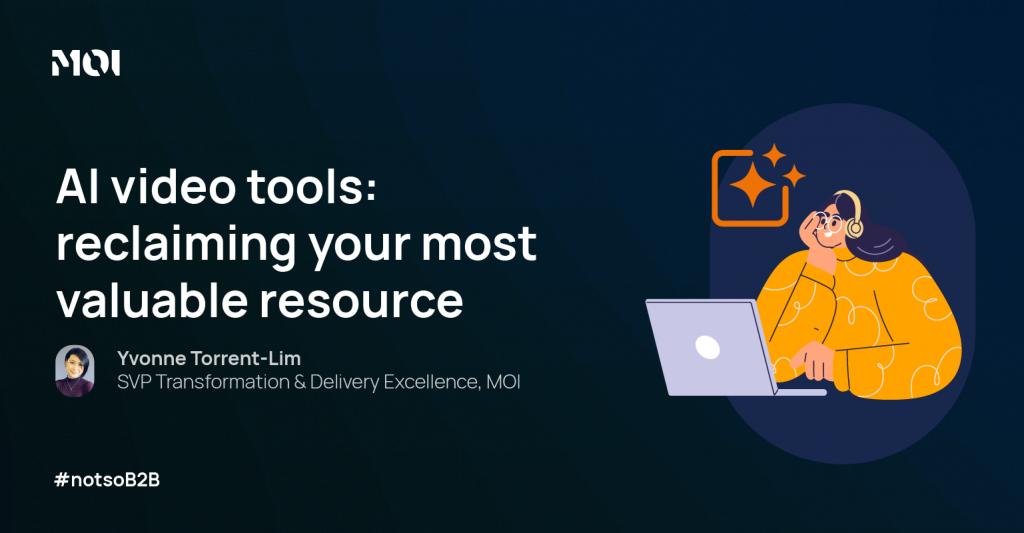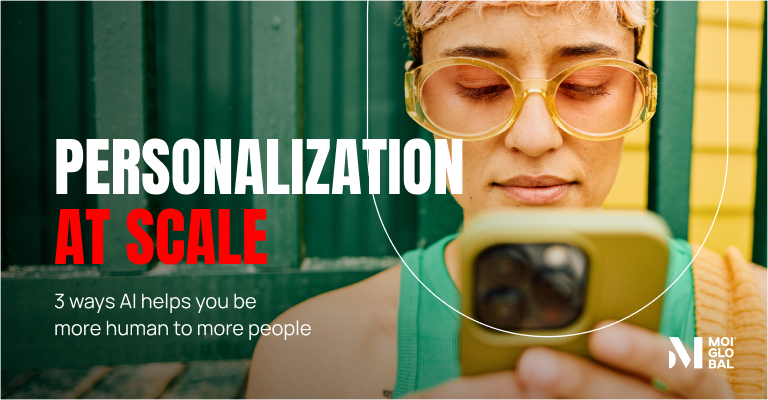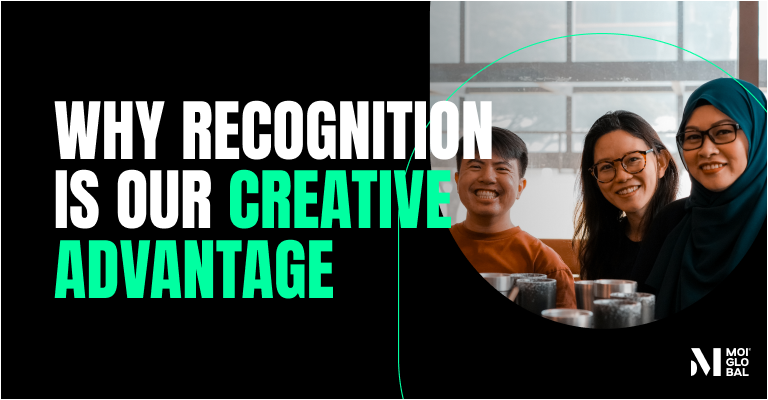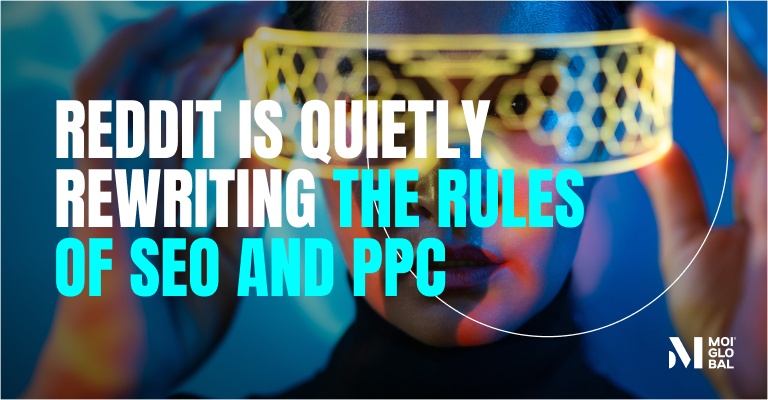
The arrival of AI-driven production tools has done more than accelerate workflows, it’s redefined what can happen in the time between idea and output.
Yet the conversation still so often misses this. People fixate on what these tools can replace, rather than what they can unlock.

We’re all asking the wrong question about AI in video
There’s a curious fixation in the video production world right now, and it’s not about storytelling, artistry, or the thrill of a perfectly timed cut. No. It’s about how cheaply we can make something.
At industry events and increasingly on Instagram, where wisdom now comes in thirty-second, pastel-coloured slides, people ask the same thing: What can AI replace? How much can it shave off a budget? Where’s the saving?
This is a bit like being given the key to a sports car and immediately wondering how slowly you can drive it to save petrol. You’re missing the point.
Because the point isn’t what AI replaces. It’s what it unlocks.

From cost cuts to clock gains: the time machine effect
After months wrestling with these tools, here’s what stands out: AI doesn’t so much make things cheaper as make them faster. And not “a bit faster,” like saving ten minutes in a queue, it’s “storybook faster,” the sort of leap where something that once took a week now takes a fraction of the time, and you briefly suspect witchcraft.
But speed isn’t the same as saving. It just changes where your hours go. And those hours are worth a fortune if they’re spent well.
So rather than the unsexy pitch of “We’ll save £10k per project,” a sharper line is:
“We’ll have 40 extra hours to make the work better.”
That extra time can mean testing more creative directions, tailoring edits for different audiences, or running variations to improve performance.
And yes, it’s that dramatic. Even stop-motion animations, the sort that used to require teams hunched over tiny sets for months, can now be knocked out in a weekend by one person. Here’s a great example of that pace in action.

Why human eyes still matter more than machine speed
You still need people who know what “good” looks like, not just technically passable but stop-scrolling, mind-hooking good.
And that’s not something you learn in an afternoon fiddling with prompts. It comes from years spent behind a camera, in edit suites, on set at 4 a.m. waiting for the light to be just right. Directors, cinematographers, editors, scriptwriters—people who have spent entire careers training their eyes and ears to spot the moment when something works. They can see the difference between a story, a scene, a shot, that’s merely “fine” and one that lives in the memory.
AI can write your video script. And yes, that script will be roughly as engaging as a manual for assembling a shed. You want a real scriptwriter for that.
The right people can glance at an AI draft and instantly spot the trouble: the pacing that lumbers, the lighting that feels like it’s been borrowed from a hostage video, the tone that’s just slightly “birthday card from your bank.” These aren’t polish points, they’re the marrow of what makes a video land.

Where AI’s speed actually delivers value
You can now prototype from a prompt. Storyboards that once took a week can now be roughed out in a couple of days, enough to give shape to ideas much faster, even if the detail still takes time.
Video is moving at breakneck speed, from prototyping all the way to execution. You’re not booking flights and building sets anymore. If your brief is clear, you can get something usable in hours.
But let’s be clear: you still need structure, direction and narrative. Thinking you can “AI your way” to finished work is a mistake. And I’ve seen plenty of people make it.
You could be an expert prompter, but if you can’t curate the work and string it together, it just doesn’t work.

The real budget shift: where the money goes now
The line I hear often is: “It’s going to cut our production budget in half.” Nitro Media Group reported that AI tools can lower video costs by up to 37%. This is usually followed by the idea that the leftover money can go straight to media or be banked. But that doesn’t really hold.
Yes, you’ll probably spend less on travel and shoot logistics. But the spend doesn’t disappear. It just moves:
- AI tools (most on subscription, plus the credits you burn through with multiple renders and endless iterations)
- Hardware and render capacity
- Storage (especially for iterations)
- Training your creative and technical experts on how to prompt effectively and integrate AI tools into workflows
- Reworking the parts that miss the mark
Doing the job might be faster, but learning how to do it again with AI, that time costs money. If you don’t have someone guiding the process, you’ll lose hours trying to fix mediocre outputs.

AI works best with a strong creative core
It’s tempting to see AI as a reason to reduce your creative firepower. The tools are fast, flexible, and can take on a surprising amount of production work, but they can’t replace the judgment, taste, and instincts that come from experienced creative minds.
The smarter approach is to support and strengthen your creative team or agency, give them the tools, and let them direct the speed AI provides toward better outcomes.

Spend the time, don’t bank it
If production suddenly takes half the time, here’s how not to waste that miracle:
- Don’t rush the release
- Don’t settle for your first draft
- Test more creative angles
- Tailor versions for different audiences
- Improve the emotional connection
MIT Sloan found AI-only creative consistently underperformed. Results improved only when humans shaped the final work.
The time saved in production should be repurposed into crafting, creating and curating, the bit AI still can’t do that well.

Turning AI speed into campaign impact
- Faster turnarounds mean you can jump on market moments without sacrificing storytelling quality.
- Budget shifts from travel and logistics can be redirected into testing formats, tailoring edits, and running more versions for different buyer personas.
- Creative oversight ensures videos not only look polished but are strategically aligned to your GTM plan.
- Iterative freedom gives you more opportunities to test and learn, increasing the odds your content hits home.

The bottom line
AI’s value in video production isn’t about halving your budget. It’s about buying back the time lost to slow workflows, and then spending that time like a miser spends gold.
Use it well, and your work gets better. Use it badly, and you’ll just produce mediocrity at twice the speed. And we already have more than enough of that.


